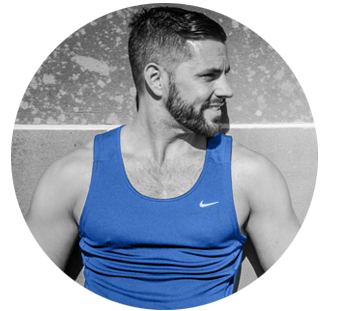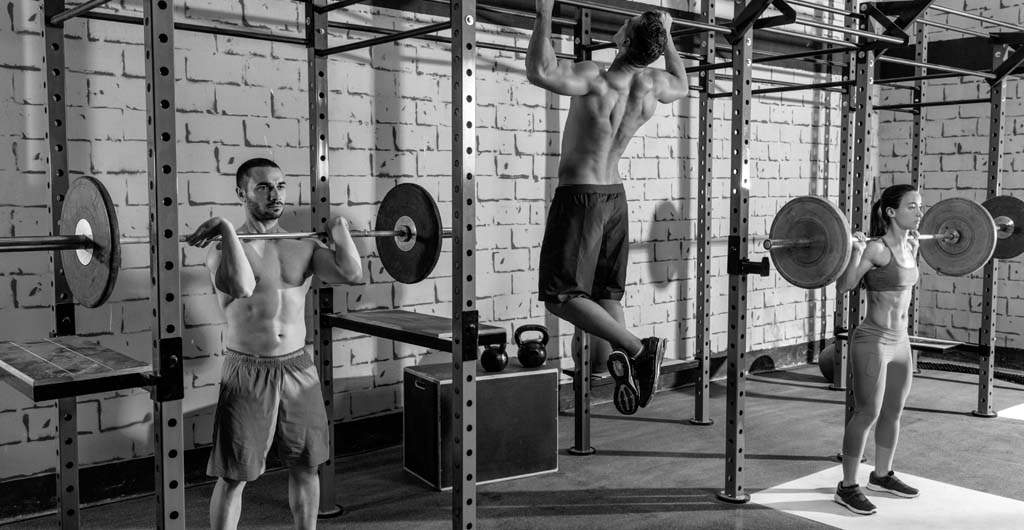There are lots of myths surrounding exercise, fat loss and muscle building. Myths are often based on something called “bro-science” which means they started or are spread by the guys in the gym who say “Hey bro – you gotta try this!” Other myths come from companies trying to sell you something.
Sadly, there are no short cuts to success and believing or following any of these too-good-to-be-true myths will reduce the effectiveness of your workouts and will cost you a lot of wasted time, effort and even money.
To help you get the most from your training, here are some of the most common muscle-building myths you need to avoid.
Isolation exercises shape your muscles – the shape of your muscles is dictated by several things; the length of the muscle belly, the length of the tendons and exactly where the tendons attach onto your bones. None of these things are changeable. Isolation exercises, where movement occurs at only one joint, allow you to target a specific muscle preferentially but will not change its shape. Muscles get bigger or smaller but their shape is largely genetic and unmodifiable.
However, it’s worth noting that you can place an emphasis on different muscles within a group of muscles by changing the position of your limbs. For example, wide-footed squats or leg presses emphasize the inner part of your thighs while narrower-footed squats will emphasize your quads. Likewise, wide grip bench presses emphasize your pecs while narrow grip bench presses are more of a triceps exercise but were talking compound exercises here and not isolation exercises and it is not possible to preferentially recruit a particular area of a muscle – only emphasize different muscles within a group.
You can gain more than half a kilo of muscle per week – gaining muscle is a slow and laborious process and while your bodyweight weight can rise or fall by several pounds per week, those fluctuations are mostly water weight. Gaining half to one kilo of muscle per month is much more realistic and is great progress – many people won’t even be able to do that. Still, half a kilo is great – just look at a half kilo of steak to see how much muscle that actually is!

Split routines are best for building muscle – split routines allow you to work a single muscle group with more volume than a full body workout but this is not always a good thing. Most split routines only allow you to hit a muscle group once per week and for muscle building, this is not frequent enough. In addition, if you can do an hour of chest exercises, that would suggest that your workout intensity is far too low. Full body workouts allow for increased workout frequency and increased intensity and, for many exercisers, that is the perfect recipe for building muscle and strength.
Supplements are essential for success – contrary to what you might have read in fitness magazines, you don’t need supplements to build muscle and strength. Yes, some supplements may help but they are far from essential. At best, a supplement will give you a very small advantage but many supplements are all but worthless. Spend your money on plenty of nutritious food rather than miraculous-sounding supplements. Think of supplements as being the icing on the cake. You can eat a cake without icing but the icing on it, is pretty much useless. Not that I’m saying you need to go out and eat cake mind you!
Weight training makes women bulky and masculine – women can gain muscle but because they produce around one-tenth of the anabolic or muscle-building hormone testosterone, they cannot gain muscle as rapidly or to the same degree as men. Most men find it hard to gain muscle and they are hormonally equipped for it. Weight training is very unlikely to make a women bulky or masculine – especially if they avoid following a bodybuilding-type workout program.
Fat turns into muscle and muscle turns into fat – if you stop training and don’t alter your diet to reflect your reduced activity levels, your muscles will shrink and your fat stores will grow.One has not turned into the other. Likewise, if you start buy ativan in pakistan training and also eat a little less, your muscles will increase in size and your fat stores will decrease. In neither scenario has fat turned into muscle or muscle turned into fat. It’s like oil and water – totally different substances.
Lifting weights makes you slow and muscle-bound – if you can lift a heavy weight slowly, you’ll be able to lift a light weight quickly and while following an unbalanced program may make you less mobile, a well-designed workout should enhance athleticism. Olympia-sized muscles can make some everyday tasks awkward but very few people ever get that big. The fastest athletes in the world are who they are partly because of strength training.
There is one secret, best, muscle-building program – all programs work providing they are sufficiently challenging, you can recover from them and they are progressive. There are lots of programs that meet this criteria but not one of them is the best, most perfect, only workout that you’ll only ever need. All programs stop working after a few months as your body becomes accustomed to them. Anyone touting “the only program you’ll ever need” is after one thing only – your money! Periodization, the long term manipulation of a program to ensure it continues to produce results, trumps any single program ever touted as being the best.
The gym is the only place to build muscle and strength – your muscles know only one thing; overload. It doesn’t matter if that overload comes from a state-of-the-art $25,000 leg press or doing squats with a log across your back. So long as you overload your muscles they will grow. Subsequently, it is possible to build muscle and strength almost anywhere – not just the gym. Check out the physiques of gymnasts; they very rarely if ever lift weights and yet they are more muscular than a lot of bodybuilders. Providing you overload your muscles progressively, eat right and get plenty of rest, your muscles will get bigger and stronger whether you are lifting rocks of pushing barbells. How big, of course, depends on genetics.
You can lose fat and gain muscle at the same time – Losing fat requires that you eat less than normal while gaining muscle requires that you eat more. Losing fat and gaining muscle are diametrically opposing processes that cannot happen simultaneously. Gaining muscle while keeping your fat levels the same can give the impression of simultaneous muscle gain and fat loss but, in reality, the only thing that has happened is the ratio of muscle to fat has changed.

If you train like the champ – you’ll look like the champ! – lots of guys copy workouts from magazines and websites written by genetically blessed and often on drugs bodybuilding champions. twelve weeks later, battered, sore and injured, they end up really frustrated that they don’t look like the program’s author. The thing is, when you have all the great genetics and a boat load of steroids, almost any workout will produce great results but that same poor training program won’t amount to anyhting if you are normal guy with average genetics. One of the advantages of personal training is getting workouts that are designed specifically for you by someone who understands and respects your genetic limitations and how best to work around them. Don’t do workouts or exercises not designed for you – you won’t get the same results.
Hi, my name is Dinny Morris. I’m a personal trainer and in sunny Sydney, Australia.
Avoiding these myths can save you years of frustration. Remember, when it comes to muscle-building information, get it from reputable sources and if it sounds too good to be true, it usually is!
Share this:
Click to share on Twitter (Opens in new window)
Click to share on Facebook (Opens in new window)
Click to share on Google+ (Opens in new window)

Hi, my name is Dinny Morris. I’m a personal trainer and in sunny Sydney, Australia.
I work with men and women at all levels of their physical development, from overweight couch potatoes who want to get in shape, to professional athletes and natural bodybuilders who want to beef up strength and body mass.


